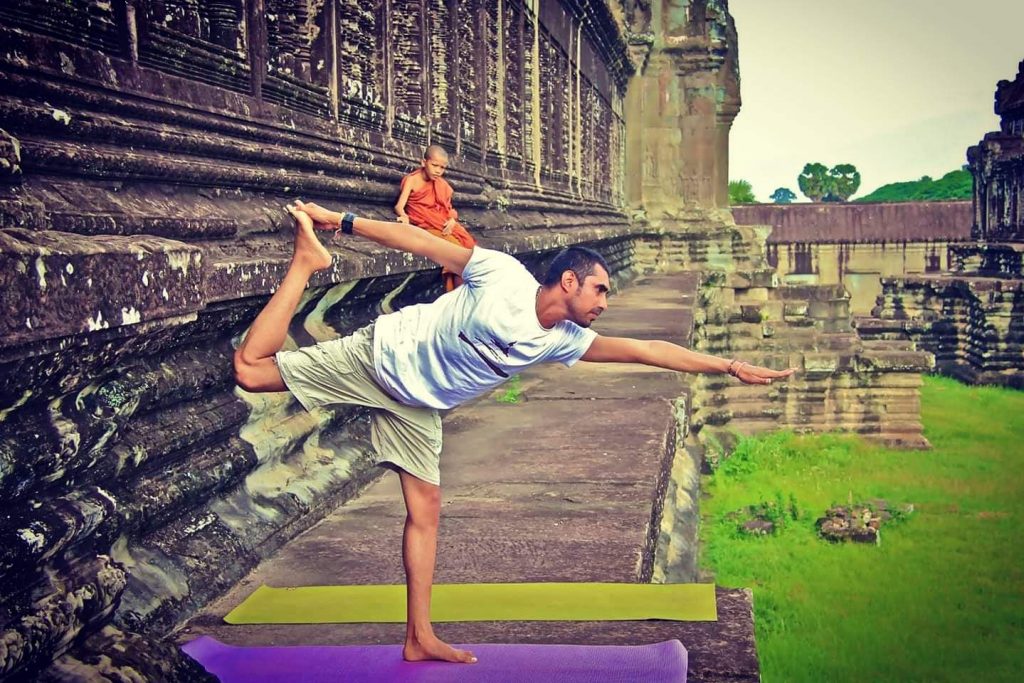Information Technology Services (ITS)
IT@UofT People: Vikram Chadalawada
Published on: September 26, 2019
The backbone of any successful team is its hard-working people. The University of Toronto’s Information Technology Services (ITS) division is privileged to employ outstanding individuals with diverse talents that extend beyond work-related education and skills.
In this segment, entitled IT@UofT People, we will get to know our IT@UofT team across the tri-campus community and find out more about their hidden or not-so-hidden talents and/or pursuits outside of work.

Vikram Chadalawada, Senior Manager, Student Information Systems and IT@UofT Strategic Plan Delivery, Enterprise Applications and Solutions Integration (EASI) and Office of the Chief Information Officer.
————————
Name: Vikram Chadalawada
Department: Enterprise Applications and Solutions Integration (EASI) and Office of the Chief Information Officer
Title: Senior Manager, Student Information Systems and IT@UofT Strategic Plan Delivery
How long have you worked at U of T?
I’ve been here at the University of Toronto (U of T) for six years and there’s never a dull moment! Originally, I started off here as a portfolio manager, that’s what I was hired for. And when I first got here the Next Generation Student Information Services (NGSIS) was very much in its initial stages. Now I manage the student information systems and I’ve been in my current role for about four years.
For the student information systems portfolio, we create, design, build and develop approximately around 28 applications for about 22 divisions across three campuses, serving 20,000 staff and faculty and 95,000 students. Recently, I’ve taken on the dual role of the IT@UofT Strategic Plan Delivery across entire ITS as well.
What do you like about working at U of T?
Working here is a constant challenge. It’s the most complex and challenging environment I have ever worked in. It’s also an environment that gives you the opportunity to pursue your interests and be a part of the greater U of T community and serve in many capacities. For example, I used to sit on the University Affairs Board on the finance planning commission for the entire University so dealing with budgets, student affairs, dealing with topics such as violence on campus, sexual harassment and racism. Right now, I’m serving as the investigations officer for the Governing Council, which is part of the central pool of investigating officers, appointed by the Governing Council working closely with the Provost and the Vice Provost, Students. So that’s an example of how you can contribute to the University in a broader way. Another example, which is what we’ll get into, is the fact that I teach yoga here.
As you mention, your not-so-secret talent outside of working in EASI is yoga, can expand on this pursuit?
I take pride in teaching at the Faculty of Kinesiology & Physical Education because one of the biggest issues that the University is trying to address is mental health. And so, there’s a big push to figure out what tools we need to access, what kind of environments we need to create within our own workplace to help facilitate this issue that is percolating within the University and outside the University as well. My approach is to be more mindful, get the body and mind aligned and this is why I ended up teaching here. I teach every Sunday throughout the year. During peak times, I’ve had up to 52 students in my class. I also teach on Wednesdays at one of the oldest yoga studios in Toronto, which is called Sivananda Yoga Vedanta Centre, established in the late 50s. I am also an entrepreneur and the founder of an annual program called Yogalicious Toronto, which combines elements of healthy diet and yoga practice.
Do you have any professional training in this field?
Yes, I have my Registered Yoga Teacher (RYT) distinction through Yoga Alliance. And every year I take courses and update my skills.
In addition to yoga, I know you have some other passions. What are they?
My passion outside of work is to bring awareness to the mind, body and also to diet. It’s a complete circle that defines our conscious lifestyles. I am very interested in what we eat, what we put into our system and where that comes from and how well we support the environment in sourcing our food. I used to say: I’m a techie by profession and a farmer at heart! And it is very true – outside of work, I have my own farm in Nicaragua and I am trying to support the local economy there by employing locals. The plan is to create a mindfulness/yoga retreat there and also do permaculture farming because I really believe that we need to support the environment. (For more information on this, visit www.hotelfincadelsol.com).
Is there anything you haven’t done!?
Lots actually! I wish I could do more, and this wish has heightened after my first sky diving experience two years ago. I do, however, enjoy travelling a lot. I have solo travelled around the world to about 40 countries and 400 cities. I ended up trying to summit Mount Everest once, but had to return back after about 7,000 metres of high-altitude trekking because of the terrible weather conditions and ever since then my yoga practice has become stronger and deeper. Also, I tend to offer free yoga classes all over the world to deserving and poor communities. I have taught yoga in Canada, United States, Mexico, Sri Lanka, India, Thailand, Denmark, Laos, Japan, Romania, Nicaragua, Costa Rica, Vietnam, the Netherlands, Germany and Spain.
In terms of yoga, who/what are your inspirations?
I started when I was about six. My grandfather had a daily practice. And so, I kind of got influenced by that, but I was also fascinated about the mind and the body at a very young age and I really felt naturally drawn towards it. I think there’s a common misconception that if you’re Indian, you end up having yoga for breakfast. But not everybody in India does yoga and in fact, it’s quite the opposite, the majority do not necessarily participate or have a keen interest towards it. It’s almost a subtle practice when you grow up in a country like India, people there used to do it silently and commercial free. However, it is only after coming to the west, that I actually realized the importance of the practice. It made me want to go back and re-engage, very deeply into it. Also, not too many people know this, as a kid growing up in India, I practiced yoga every morning, waking up at 5 a.m.
Note: View the fall schedule for Vikram’s U of T yoga class.

